 Your new post is loading...

|
Scooped by
?
Today, 1:26 PM
|
Proteins that bind to a target protein of interest, termed "binders," are essential components of biological research reagents and therapeutics. Target proteins present multiple binding surfaces with varying interaction potential. High-potential surfaces, or "hot spots," are experimentally identified as the most probable binding sites in de novo discovery campaigns. However, hot spots and their default binding modes do not always confer the desired specificity. Related proteins or isoforms often share similar hot spots, resulting in promiscuous binding. Interaction with a hot spot may also fail to elicit the intended biological outcome. Consequently, methods that direct de novo binder discovery toward targets with defined specificity are critically needed. We recently developed phage-assisted non-continuous selection of binders (PANCS-Binders), a selection platform with unparalleled speed and sequence-function fidelity that enables routine de novo binder discovery within days. However, because PANCS-Binder selections enrich variants based primarily on affinity, secondary screening is unlikely to identify binders to lesser hot spots because of the high likelihood of convergence. These alternative binding surfaces with weaker inherent interactions may possess desirable specificity profiles. Here, we develop PANCS-spec-Binders, which incorporates simultaneous selection and counterselection to control the specificity of enriched binders. We demonstrate PANCS-spec-Binders in two proof-of-concept applications: (1) discovery of isoform-selective binders that bind HRAS with >100-fold higher affinity than the highly related KRAS isoform, and (2) discovery of epitope-specific binders that either target or avoid the LIR interaction region of LC3B. PANCS-spec-Binders enables rapid identification of binders with defined specificity within days.

|
Scooped by
?
Today, 1:17 PM
|
Awareness is rising that antifungal resistance poses a threat to agriculture, food safety, biodiversity and human health. There is a limited number of antifungals available and resistance to all of them has been reported. The development of novel antifungals is complex, as eukaryotic organisms have very few selective drug targets that distinguish them from the infected plant, human or animal host. Yeasts produce different compounds with antifungal activity, ranging from small molecules such as iron chelators, biosurfactants and volatile organic compounds, to proteins like myocins and hydrolytic enzymes. Those could be further developed into new antifungals; however, there is a scarcity of fundamental knowledge on their chemical structure, their mode of action, their biosynthesis and its regulation. Given the opportunities that yeasts display as industrial hosts and the synthetic biology tools available, a deeper understanding of these molecular aspects could enable a wider range of yet underexplored applications for the producer yeast and their molecules, from biocontrol to food preservation and human health. To facilitate this exploration, we here consolidate current molecular knowledge on these compounds, suggest readily available methodologies to screen for different molecule classes in natural yeast isolates and discuss how they could be further studied and engineered towards their eventual application.

|
Scooped by
?
Today, 12:40 PM
|
Globular proteins are expected to assume folds with fixed secondary structures, α-helices and β-sheets. Fold-switching proteins challenge this expectation by remodeling their secondary and/or tertiary structures in response to cellular stimuli. Though these shape-shifting proteins were once thought to be haphazard evolutionary by-products with little intrinsic biological relevance, recent work has shown that evolution has selected for their dual-folding behavior, which plays critical roles in biological processes across all kingdoms of life. The widening scope of fold switching draws attention to the ways it challenges conventional wisdom, raising fundamental unanswered questions about protein structure, biophysics, and evolution. Here we discuss the progress being made to answer these questions and suggest future directions for the field.

|
Scooped by
?
Today, 12:12 PM
|
Phyllosphere microbiota play crucial roles in supporting host performance. However, the dynamic changes of phyllosphere-associated microbiome during pathogen infections and their impacts on plant health remain unknown. Here, we found phyllosphere microbes can mitigate wheat Fusarium head blight (FHB), a severe disease caused by Fusarium graminearum (F. graminearum) pathogen that promotes infection by inducing host alkalinization. Using wheat head microbial community profiling and metatranscriptomics, we found Pseudomonas spp. significantly enriched on infected wheat heads. Through isolating 595 bacterial strains from infected wheat heads—including 196 Pseudomonas isolates—we identified certain enriched Pseudomonas isolates capable of producing organic acids that counteract pathogen-induced pH upshift. In vitro experiments confirm the selective promotion of specific host-acidifying Pseudomonas in wheat heads. Field trials confirmed that host-acidifying Pseudomonas strains effectively controlled FHB. These findings highlight the pivotal role of plant-beneficial microbes in host pH regulation and offer innovative avenues for sustainable plant disease control.

|
Scooped by
?
Today, 11:53 AM
|
Precise temporal control of protein abundance is essential for dissecting dynamic cellular processes. While degron-based systems enable rapid protein depletion in eukaryotic cells, comparable tools are lacking for bacterial effectors delivered into host cells during infection. Here, we establish AIDE (Auxin-Inducible Degradation of Effectors), a host-directed degradation platform that harnesses the ubiquitin-proteasome system to selectively eliminate secreted bacterial proteins, including membrane-integrated effectors. By integrating a minimal auxin-inducible degron (AID) tag into effector genes, AIDE enables rapid, reversible, and spatially confined degradation while preserving native expression and secretion. Applied to Chlamydia trachomatis, AIDE revealed that the membrane-integrated deubiquitinase Cdu1 suppresses autophagy early and later promotes developmental transitions, whereas the integral membrane fusogen IncA is continuously required for inclusion integrity. This AIDE platform provides minute-scale, spatiotemporal control over bacterial effector activity, offering a broadly applicable framework for dissecting virulence mechanisms and host-pathogen interactions across diverse secretion-dependent pathogens.

|
Scooped by
?
Today, 11:06 AM
|
Filamentous fungi can convert a wide variety of naturally occurring chemical compounds, including organic biomass and waste streams, into a range of products. They have long been used for industrial organic acid production and food preparation. In this review, we will discuss production of products such as organic acids, lipids, small molecules, enzymes, materials, and foods, and highlight advances in metabolic and protein engineering, including CRISPR-Cas9-mediated strain improvements. We discuss to what extent these products are already being made on a commercial scale, as well as what is still required to make certain promising concepts industrially and commercially relevant. Despite significant progress, the systematic application of synthetic biology to filamentous fungi remains in its infancy, with many opportunities for discovery and innovation as new strains and genetic tools are developed. The integration of fungal biotechnology into circular and bio-based economies promises to address critical challenges in waste management, resource sustainability, and the development of new materials for terrestrial and extraterrestrial applications, but requires further developments in genetic engineering and process design.

|
Scooped by
?
Today, 10:57 AM
|
Understanding protein function at the molecular level requires connecting residue-level annotations with physical and structural properties. This can be cumbersome and error-prone when functional annotation, computation of physicochemical properties, and structure visualization are separated. To address this, we introduce ProCaliper, an open-source Python library for computing and visualizing physicochemical properties of proteins. It can retrieve annotation and structure data from UniProt and AlphaFold databases, compute residue-level properties such as charge, solvent accessibility, and protonation state, and interactively visualize the results of these computations along with user-supplied residue-level data. Additionally, ProCaliper incorporates functional and structural information to construct and optionally sparsify networks that encode the distance between residues and/or annotated functional sites or regions.

|
Scooped by
?
Today, 10:49 AM
|
The conjugative transfer of plasmid-mediated antibiotic resistance genes (ARGs) plays a key role in the spread of antibiotic resistance, posing a major global public health threat. The tire rubber antioxidant N-(1,3-dimethylbutyl)-N′-phenyl-p-phenylenediamine (6PPD) and its quinone derivative (6PPD-Q) are emerging pollutants that are widely present in the environment and pose significant ecological risks. However, their potential impact on plasmid transfer remains poorly understood. Here, we established in vitro conjugation models under simulated aquatic conditions to evaluate the effects of environmentally relevant concentrations of 6PPD and 6PPD-Q on RP4 plasmid transfer in Escherichia coli(E. coli). Our results demonstrate that both compounds significantly enhance plasmid transfer, with 6PPD-Q exhibiting a markedly greater impact. The primary mechanisms underlying this enhancement include increased reactive oxygen species (ROS) production, enhanced membrane permeability, improved cell adhesion, and promoted adenosine triphosphate (ATP) synthesis. Transcriptomic analysis, nontargeted metabolomics profiling, and molecular docking simulations corroborate these findings. Notably, 6PPD-Q significantly upregulated ATP synthesis-related genes in donor bacteria and altered metabolic processes in the conjugation system. This study provides novel insights into how 6PPD and 6PPD-Q facilitate the conjugative transfer of ARGs and highlights the potential environmental impact of 6PPD-Q in promoting the spread of ARGs.

|
Scooped by
?
Today, 10:14 AM
|
The human genome contains a sophisticated array of elements that regulate gene activity and organismal functions. Developing a large window foundation model capable of efficiently processing long sequence inputs is essential yet challenging for decoding the multi-layered and complex landscape of the cis-regulatory elements. Here, we introduce OmniReg-GPT, a generative foundation model designed for the low-resource pretraining of long genomic sequences by optimized attention mechanism. During pretraining, OmniReg-GPT captures the complete distribution of regulatory elements across nucleotide to megabase scales with efficient training speed and memory usage. We demonstrate exceptional performance in downstream regulotary applications spanning the entire spectrum of genomic scales, including various cis-regulatory elements identification, context dependent gene expression prediction, single-cell chromatin accessibility analysis, and 3D chromatin contact modeling. As a generative model, OmniReg-GPT also holds the potential to generate candidate cell-type-specific enhancers through prompt engineering. Overall, OmniReg-GPT extends the boundaries of foundation models in the genomic field, and provides a valuable pretraining model resource which can be extensively applied for genomic researches. Understanding long-range genomic regulation is a key challenge for DNA foundation models. Here, authors develop OmniReg-GPT with a hybrid local-global attention architecture, enabling efficient analysis of multi-scale regulatory features across long DNA sequences.

|
Scooped by
?
Today, 9:56 AM
|
Resistance to antibiotics is approaching crisis levels for organisms such as the ESKAPEE pathogens (includes Enterococcus faecium, Staphylococcus aureus, Klebsiella pneumoniae, Acinetobacter baumannii, Pseudomonas aeruginosa, Enterobacter spp., and Escherichia coli) that often are acquired in hospitals. These organisms sometimes have acquired plasmids that confer resistance to most if not all beta-lactam antibiotics. We have been developing alternative means for dealing with antibiotic resistant microbes that cause infections in humans by developing viruses (bacteriophages) that attack and kill them. One of these pathogens, K. pneumoniae, has one of the highest propensities for antimicrobial resistance. We identified many phages that have lytic capacity against limited numbers of clinical isolates, and through experimental evolution over the course of 30 days, were able to vastly expand the host ranges of these phages to kill a broader range of clinical K. pneumoniae isolates including MDR (multi-drug resistant) and XDR (extensively-drug resistant) isolates. Most interestingly, they were capable of inhibiting growth of clinical isolates both on solid and in liquid medium over extended periods. That we were able to extend the host ranges of multiple naïve antibiotic resistant K. pneumoniae through experimental phage evolution suggests that such a technique may be applicable to other antibiotic-resistant organisms to help stem the tide of antibiotic resistance and offer further options for medical treatments. Ghatbale et al. adapted a co-evolutionary technique to develop Klebsiella pneumoniae phages to be highly active longitudinally against K. pneumoniae clinical isolates, including drug resistant isolates.

|
Scooped by
?
Today, 1:19 AM
|
Filamentous cyanobacteria of the Nostocaceae family can differentiate into multicellular forms to adapt to environmental stresses, and members can establish symbiosis with various embryophytes. Representative laboratory strains are typically grown under continuous light to maintain stable metabolic conditions; however, this departure from a natural diel cycle can result in extended stress. Early genomic examination of Nostoc punctiforme suggests the genetic potential for a circadian clock, but we lack insight into global cellular dynamics through the natural diel cycle for this model organism. Here, we comprehensively assess changes in expression of core cellular processes and the mobilome of accessory genetic elements during diel growth of N. punctiforme PCC 73102. The primary transcriptome confirmed that multicellular cyanobacteria precisely coordinate photosynthesis and carbon assimilation for cell division during the day, while control of DNA recombination and repair appeared to be sequestered to darkness. Moreover, we expanded the known repertoire of light-sensing proteins to uncover a putative regulator of circadian rhythm that itself exhibits striking oscillation between day-night expression. This was in sharp contrast to the arrhythmic pattern observed for a homolog of the canonical circadian input kinase in unicellular cyanobacteria. Looking beyond cellular coordination of diel growth, we uncovered dynamic mobile elements and, notably, targeted hypermutation by retroelements that are likely maintained for conflict mitigation, which is crucial for a multicellular lifestyle.

|
Scooped by
?
Today, 1:11 AM
|
Agrobacterium-mediated transformation (AMT) is the primary means of genetic engineering in plants and many fungi, but the factors that control transformation outcomes - efficiency, transgene insertion number, and transgene integrity - remain poorly characterized. Although transformation outcomes dictate an event's potential utility in both industrial and academic contexts, AMT remains largely unoptimized for these metrics. Here, we systematically analyze the impact of the transgene-harboring binary vector on transformation outcomes across plant and fungal species. Through a comparison of different plasmid origin of replication (ORI) families and engineered copy number variants, our results reveal that the ORI family - not plasmid copy number - dictates T-DNA insertion number, backbone inclusion, and transformation efficiency, while plasmid copy-number tuning alters efficiency without changing ORI family-specific signatures. Independent of plasmid copy number across kingdoms, the most widely used pVS1 ORI-based vectors (e.g. pCambia) result in significantly more insertions per transformant and high levels of transgene silencing compared to the less-utilized pSa ORI family, which enriches for more uniform single insertion events. Furthermore, we demonstrate that ORI-dependent transformation outcomes in yeast predictably reflect those in Arabidopsis. Together, these results lay the foundation for future binary vector design aimed at achieving more predictable, controllable, and optimized transformation outcomes across diverse eukaryotic hosts.

|
Scooped by
?
Today, 12:58 AM
|
Iron is a critical micronutrient for both plants and humans, yet its declining availability across agricultural systems threatens global food security and health. Biofortification of food crops has emerged as a promising strategy to combat iron deficiency and anemia, leveraging both crop breeding and microbiome-based approaches to enhance iron mobilization and uptake. Advances in plant and bacterial synthetic biology could enable the precise programming of iron homeostasis and acquisition mechanisms, offering tailored solutions across diverse species and environments. Here, we outline key biomolecules, genes, and biosynthetic and transport pathways that represent underexplored synthetic biology targets for improving crop iron acquisition. We highlight opportunities to tune expression strength, tissue specificity, and cross-host pathway transfer to enhance chelation- and reduction-mediated solubilization of soil iron and augment plant uptake. Finally, we emphasize the broader importance of developing plant–microbe–metal actuators as modular components in genetic circuit design and discuss how their deployment across diverse plant and microbial chassis could accelerate agricultural biofortification and improve global nutrition.
|

|
Scooped by
?
Today, 1:21 PM
|
CRISPR-dCas tools have widespread applications for rapidly manipulating and dissecting gene function across the microbial tree of life. However, despite their theoretical suitability for use in a broad range of species, CRISPR-dCas tools that are often initially optimized for use in model cell lines and model organisms still frequently require extensive modifications to enable their application in specific microbial organisms. Here, we review different iterations of CRISPR-dCas in microbes and the application of these techniques. We further discuss common obstacles faced and troubleshooting approaches while developing and applying CRISPR-dCas systems to a microbial organism. Finally, we suggest enhancements that can be made that may help improve the applicability of a CRISPR-dCas tool developed for nonmodel microbial organisms.

|
Scooped by
?
Today, 12:47 PM
|
This article reviews the latest advances in base editing technologies that enable precise nucleotide substitutions in plants. It highlights how these tools and their associated methods are revolutionizing crop breeding by accelerating the development of improved agronomic traits.

|
Scooped by
?
Today, 12:31 PM
|
Under osmotic stress, bacteria express a heterotetrameric protein complex, KdpFABC, which functions as an ATP-dependent K+ pump to maintain intracellular potassium levels. The subunit KdpA belongs to the superfamily of K+ transporters and adopts pseudo fourfold symmetry with a membrane-embedded selectivity filter as seen in K+ channels. KdpB belongs to the superfamily of P-type ATPases with a conserved binding site for ions within the membrane domain and three cytoplasmic domains that orchestrate ATP hydrolysis via an aspartyl phosphate intermediate. Previous work hypothesized that K+ moves parallel to the membrane plane through a 40 Å long tunnel that connects the selectivity filter of KdpA with a canonical binding site in KdpB. In the current work, we have reconstituted KdpFABC into lipid nanodiscs and used cryo-EM to image the wild-type pump under turnover conditions. We present a 2.1 Å structure of the E1~P·ADP conformation, which reveals new features of the conduction pathway. This map shows strong densities within the selectivity filter and at the canonical binding site, consistent with K+ bound at each of these sites in this conformation. Many water molecules occupy a vestibule and the proximal end of the tunnel, which becomes markedly hydrophobic and dewetted at the subunit interface. We go on to use ATPase and ion transport assays to assess effects of numerous mutations along this proposed conduction pathway. The results confirm that K+ ions pass through the tunnel and support the existence of a low-affinity site in KdpB for releasing these ions to the cytoplasm. Taken together, these data shed new light on the unique partnership between a transmembrane channel and an ATP-driven pump in maintaining the large electrochemical K+ gradient essential for bacterial survival.

|
Scooped by
?
Today, 12:05 PM
|
Bacteriophages and bacteria frequently occupy the same ecological niches, driving complex and dynamic host–virus interactions. In Pseudomonas aeruginosa, phages from the Migulavirinae subfamily, tail fibre proteins (TFPs) are crucial to host recognition. These proteins, located within the phage tail structure, are subject to frequent recombination and may play a key role in shaping host range. This study investigates the molecular basis of host specificity in Litunavirus and Luzseptimavirus phages, focusing on the structure and variation of their TFPs. Host spectrum analysis divided phages into three categories; however, contrary to expectations, no direct correlation was found between TFP recombination history and host range, most likely because subsequent single amino acid changes in the pyocin knob regions, critical for adsorption, altered the host spectrum after the recombination event. Notably, phages sharing highly similar pyocin knob 2 domain architectures displayed identical host spectra, suggesting a strong link between this region and host specificity. Despite high sequence variability, all TFPs adopted a conserved trimeric fold with five regions: N-terminal, GrpE-like, GDSL-like with a carbohydrate-binding module, pyocin knob, and C-terminal. Structural similarities to bacterial PilA and pyocins were noted. Variation in the pyocin knob region, especially substitutions involving polar residues, was partially correlated with host range, likely via hydrogen bonding with the O-antigen. The GrpE-like domain resembled type IV pili, suggesting a role in reversible attachment, while the GDSL-like domain may support enzymatic processing of the O-antigen. Our findings support a multi-step adsorption mechanism of Migulavirinae phages, initiated by random encounters with the bacterial surface, followed by specific, stable interactions between the pyocin knob region and the bacterial lipopolysaccharide (LPS) O-antigen. Final stabilization involves additional interactions with the LPS core region. While the GrpE-like domain may contribute to transient stabilization near the surface, its structural similarity to PilA suggests a possible evolutionary convergence rather than a direct pilus-binding function. Despite high sequence variability, TFPs maintain conserved structural features, allowing for modular adaptations that precisely adjust host specificity. Importantly, the lack of a direct link between TFP recombination and host range suggests that factors beyond recombination influence phage host specificity.

|
Scooped by
?
Today, 11:37 AM
|
The Michaelis constant (Km) is central to enzyme kinetics, guiding variant selection, inhibitor screening, and metabolic modeling. However, Km obtained by nonlinear regression can be substantially inaccurate even when the reported standard error (SE) appears small. Common software reports SE but provides no accuracy metric. This gap is addressed by extending the accuracy confidence interval (ACI) framework to Km (ACI-Km) through a binding-isotherm formulation of the velocity–substrate fit. Given confidence intervals for concentration accuracy, the method quantifies how residual systematic uncertainties in enzyme and substrate concentrations ( E0 and S0) propagate into the determined Km values and provides a probabilistic interval expected to enclose the accurate value. The approach requires no additional kinetic experiments and is directly applicable to existing datasets. Concentration-accuracy intervals can be estimated from calibration data, reagent specifications, or quality-control records. ACI-Km is valid across a wide range of E0/Km conditions, including relatively high E0. A free web application (https://aci.sci.yorku.ca) implements ACI-Km. Tests on synthetic and experimental datasets show that Km ± SE can severely underestimate uncertainty, whereas ACI provides more reliable accuracy bounds for decision-making, complementing rather than replacing traditional precision metrics by providing quantitative diagnostic bounds for concentration-related uncertainties in Km determination.

|
Scooped by
?
Today, 11:03 AM
|
BreakTag is a scalable next-generation sequencing-based method for the unbiased characterization of programmable nucleases and guide RNAs at multiple levels. BreakTag allows off-target nomination, nuclease activity assessment and the characterization of scission profile, that, in Cas9-based gene editing, is mechanistically linked with the indel repair outcome. The method relies on digestion of genomic DNA by Cas9 and guide RNAs in ribonucleoprotein format, followed by enrichment of blunt and staggered DNA double-strand breaks generated by CRISPR nucleases at on- and off-target sequences. Next-generation sequencing and data analysis with BreakInspectoR allows high-throughput characterization of Cas nuclease activity, specificity, protospacer adjacent motif frequency and scission profile. Here we first describe a detailed BreakTag protocol for the nomination of CRISPR off-targets and multilevel characterization of engineered Cas variants and second, we describe a step-by-step protocol for data analysis using BreakInspectoR. Third, we provide a web interface for XGScission, a machine learning model amenable to training with scission-aware BreakTag data to predict the relative frequency of blunt and staggered double-strand breaks at new sequences unseen by the model. XGScission allows a preselection of target sequences predicted to be cut in staggered configuration that are preferably repaired as single-nucleotide templated insertions. Furthermore, XGScisson can be used to assess sequence determinants of blunt and staggered cleavage by SpCas9 and engineered nuclease variants. As a companion strategy, we describe HiPlex for the generation of hundreds to thousands of single guide RNAs in pooled format for the production of robust BreakTag datasets. The BreakTag library preparation takes ~6 h, and the entire protocol can be completed in ~3 d, including sequencing, data analysis with BreakInspectoR and XGScission model training. BreakTag is a scalable next-generation sequencing-based method for the unbiased characterization of programmable nucleases and guide RNAs that allows off-target and nuclease activity assessment, as well as the characterization of scission profiles.

|
Scooped by
?
Today, 10:52 AM
|
Custom DNA constructs have never been more common or important in the life sciences. Many researchers therefore devote substantial time and effort to molecular cloning, aided by abundant computer-aided design tools. However, support for managing and documenting the construction process, and for effectively handling and reducing the frequency of setbacks, is lacking. To address this need, we developed CloneCoordinate, a free, open-source electronic laboratory notebook specifically designed for cloning and fully implemented in Google Sheets. By maintaining a real-time, automatically prioritized task list, a uniform physical sample inventory, and standardized data structures, CloneCoordinate enables productive, collaborative cloning for individuals or teams. We demonstrate how the information captured by CloneCoordinate can be leveraged to troubleshoot assembly problems and provide data-driven insights into cloning efficiency, setting the stage for automated recommendations based on actual track records. CloneCoordinate offers a new and uniquely accessible model for how to carry out, and iteratively improve on, real-world DNA assembly.

|
Scooped by
?
Today, 10:19 AM
|
In living organisms, proteins perform key functions required for life activities by interacting to form complexes. Determining the protein complex structure is crucial for understanding and mastering biological functions. Although AlphaFold2 makes a revolutionary breakthrough in predicting protein monomeric structures, accurately capturing inter-chain interaction signals and modeling the structures of protein complexes remain a formidable challenge. In this work, we report DeepSCFold, a pipeline for improving protein complex structure modeling. DeepSCFold uses sequence-based deep learning models to predict protein-protein structural similarity and interaction probability, providing a foundation for identifying interaction partners and constructing deep paired multiple-sequence alignments (MSAs) for protein complex structure prediction. Benchmark results show that DeepSCFold significantly increases the accuracy of protein complex structure prediction compared with state-of-the-art methods. For multimer targets from CASP15, DeepSCFold achieves an improvement of 11.6% and 10.3% in TM-score compared to AlphaFold-Multimer and AlphaFold3, respectively. Furthermore, when applied to antibody-antigen complexes from the SAbDab database, DeepSCFold enhances the prediction success rate for antibody-antigen binding interfaces by 24.7% and 12.4% over AlphaFold-Multimer and AlphaFold3, respectively. These results demonstrate that DeepSCFold effectively captures intrinsic and conserved protein-protein interaction patterns through sequence-derived structure-aware information, rather than relying solely on sequence-level co-evolutionary signals. In this work the authors present DeepSCFold, a pipeline which improves the protein complex structure prediction accuracy by capturing intrinsic and conserved protein-protein interaction patterns through sequence-derived structure-aware information.

|
Scooped by
?
Today, 10:04 AM
|
Structure-based sequence redesign or inverse folding can significantly enhance structural stability but often compromises functional activity when performed using existing models. Here, we introduce ABACUS-T, a multimodal inverse folding model that improves precision and minimizes functional loss. ABACUS-T unifies several important features into one framework: detailed atomic sidechains and ligand interactions, a pre-trained protein language model, multiple backbone conformational states, and evolutionary information from multiple sequence alignment (MSA). Redesigned proteins show notable improvements: an allose binding protein achieves 17-fold higher affinity while retaining conformational change; redesigned endo-1,4-β-xylanase and TEM β-lactamase maintain or surpass wild-type activity; and OXA β-lactamase gains altered substrate selectivity. All achieve substantially increase thermostability (∆Tm ≥ 10 °C). In each test case, these enhancements are achieved by testing only a few sequences, each containing dozens of simultaneously mutated residues. ABACUS-T thus offers a promising tool for reengineering functional proteins in biotechnological applications. Improving protein stability by inverse folding often compromises function. Here, the authors develop ABACUS-T, a multimodal inverse folding model that combines structural and evolutionary information to redesign proteins with enhanced stability while preserving biological activity.

|
Scooped by
?
Today, 1:21 AM
|
Metabolic engineering employs microbial cell factories to produce high-value products from low-cost feedstocks. Designing, optimizing, and evaluating biosynthetic pathways in microbial cell factories is essential, yet these processes remain time- and labor-intensive. Biosensors help metabolic engineers address this challenge by converting target metabolite concentrations into observable outputs, enabling efficient assessment of microbial production. Whole-cell biosensors, which operate within living microorganisms, and cell-free biosensors, which function independently of cell growth using transcription–translation machinery, have contributed to microbial biosynthesis optimization through distinct approaches. This review summarizes recent advances in biosensor-driven metabolic engineering facilitated by whole-cell and cell-free biosensors.

|
Scooped by
?
Today, 1:15 AM
|
Escherichia coli Nissle 1917 (EcN) is a well-characterized Gram-negative probiotic distinguished by its unique, strain-specific physiology. Genome-scale metabolic models (GEMs) are powerful tools for elucidating metabolic traits and predicting genotype-phenotype relationships. Although several EcN GEMs have been published, none have explicitly represented its probiotic physiology. Here, we present a manually curated GEM of EcN that, for the first time, incorporates the energetic costs associated with its cryptic plasmids. Inclusion of a plasmid-specific module improved biomass yield predictions and overall model accuracy, providing a more physiologically realistic representation of EcN metabolism. Using COBRA methodologies and possibilistic metabolic flux analysis, this model and previous EcN reconstructions were systematically compared to evaluate the trade-off between model complexity and predictive performance. The analysis revealed that increased structural detail does not necessarily enhance quantitative accuracy and that predictive reliability depends on both computational methodology and model context. Metabolomic profiling under gut-like anaerobic conditions further showed that EcN exhibits a distinctive metabolic phenotype, characterized by elevated amino acid consumption and enhanced short-chain fatty acid production. These findings highlight the unique probiotic physiology of EcN and demonstrate the utility of metabolic modeling for reproducing and exploring such traits. Overall, this study provides a quantitatively reliable and physiologically relevant framework for modeling E. coli Nissle 1917 and related commensal bacteria, supporting advances in probiotic engineering, synthetic biology, and bioprocess design.

|
Scooped by
?
Today, 1:03 AM
|
Heme is an essential molecule required for critical biochemical processes in most vertebrates and bacteria. During infections, vertebrate hosts sequester heme away from invading pathogens, a process known as nutritional immunity, driving bacteria to evolve diverse mechanisms to evade this immunity and cause diseases. This review explores the functions of heme at the host–pathogen interface. We discuss the multifaceted roles of heme in bacterial pathogenesis and the potential for heme-targeting antimicrobial therapies. Beyond serving as a source of iron in the host environment, where iron bioavailability is limited, heme contributes to the structural stability and enzymatic functions of hemoproteins. We examine the regulatory mechanisms governing bacterial heme homeostasis in the host environment including sensing, detoxification, acquisition, utilization, and degradation pathways. Understanding how heme influences bacterial survival and virulence can lead to the development of novel therapeutic strategies that target the various essential and conserved mechanisms of heme homeostasis in bacterial pathogens. Given the rising challenge of antibiotic resistance, heme-based therapeutic interventions are promising strategies for the treatment of bacterial infections.
|
 Your new post is loading...
Your new post is loading...








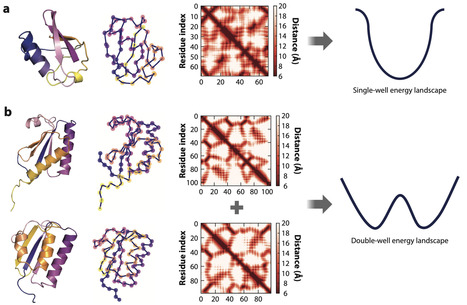


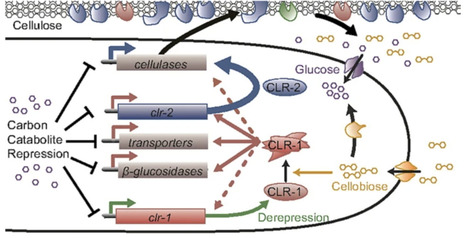






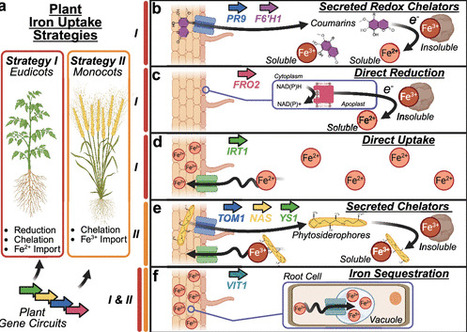


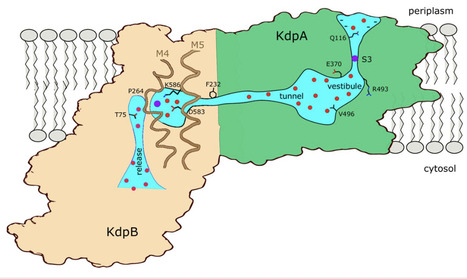






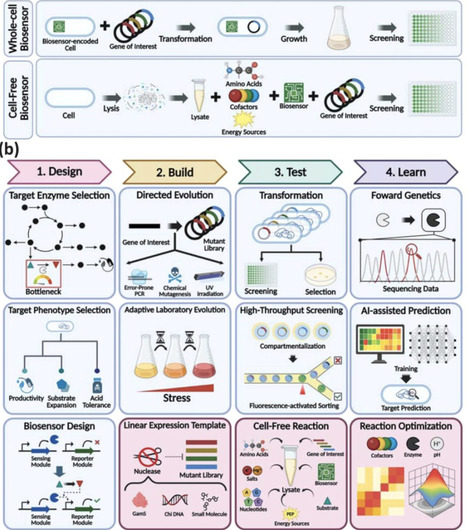







1str